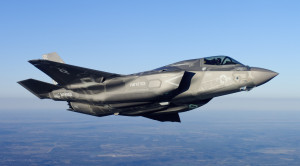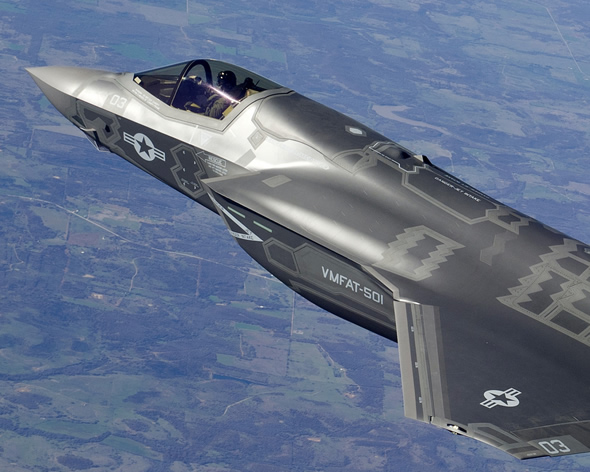
US Secretary of Defense Leon Panetta announced Friday that the United States remains committed to the further development of the Marine Corps’ version of the F-35 Joint Strike Fighter. In an address at Naval Air Station Patuxent River, Maryland, Mr. Panetta stated his belief that the F-35 is a vital and integral element in the US strategy to maintain and enhance the level of air superiority the nation now enjoys.
Mr. Panetta’s support for the F-35 hinges on his belief that the problems that have plagued the highly advanced fifth-generation stealth aircraft in the past can be overcome and resolved satisfactorily. The secretary declared in his comments that the US military would continue to dedicate resources to the future development of “cutting-edge” weapons and weapon systems. He also made it clear that the F-35 was not yet completely safe from future changes.
During his visit to Patuxent River, Mr. Panetta took the controls of the aircraft in a flight simulator and was briefed on the present status of progress being made in correcting the technical difficulties encountered in the Navy and Marine Corps models of the aircraft.
Production and development delays, cost overruns, and technical glitches have plagued the F-35 almost from the day of its inception. During the ten years the aircraft has been in development, the overall cost has risen sharply from $233 billion to an estimated $385 billion. It is now the US military’s most expensive weapon’s program in operation. Some analysts fear the F-35 may eventually cost the government more than $1 trillion in its expected 50-year lifespan.
Secretary Panetta is widely expected to formally confirm that the F-35 is a “high-priority” program sometime next week. It remains possible, given the high cost and fiscal constraints, that Mr. Panetta may direct that F-35 production be slowed down to save money while still remaining committed to purchasing the total number of aircraft initially envisioned.
Lockheed Martin is contracted to build three variants of the F-35 – one variant each for the Navy, the Marines, and the Air Force. The three variants are planned to replace the older F-16 Falcons, F/A-18 Hornets, EA-6B Prowlers, and the AV-8B Harriers. Several key American allies are also expected to buy multiple copies of the fighter.
F-35 is Effectively Off Probation
One year ago, the Marine variant of the F-35 was placed on “probation” as a result of the multiple technical problems developers were experiencing. Mr. Panetta’s address of Friday effectively removed that probation and any immediate threat that the aircraft would be cancelled.
Lifting the probation is of no real practical importance in the F-35 program, but it does give the program an official “go-ahead” of some real political importance.
The Marine variant of the aircraft has been troubled by technical difficulties fitting a set of doors on the upper surfaces of the aircraft designed to increase the flow of air into the engines. Tail hook problems impacting both Navy and Marine variants have also vexed engineers. It seems that these problems have been solved, but corrective action has not been fully implemented yet.
Praise for lifting the probation was quickly forthcoming from Commandant of the Marine Corps, General James Amos, and from the manufacturer of the Marine variant’s engines, Rolls-Royce.
General Amos also announced on Friday that the Marine Corps would introduce the new aircraft into operating squadrons in a responsible manner and only when the aircraft is deemed fit for duty. The first production F-35’s for the Marine Corps were delivered to a training unit based at Eglin Air Force Base in Florida earlier in January.
While it is evident the F-35 is not quite ready for “primetime” it is now getting some badly needed official backing that is likely to also ease some misgivings expressed by those of America’s allies most anxious to acquire a fifth-generation stealth aircraft that currently has no equal in the world. Only time will tell what will happen in the future.

















